Daninvan
ArboristSite Operative
Another great day milling at the beach with friends.
Weather has been bad all week, I was awoken at 4:30 this morning by the sound of rain hammering down on the roof. "No milling today" I figured and went back to sleep. By 7 AM it had stopped and turned into a fantastic day.
There were a few waves in the harbour when we arrived at the cutting area around 8:30, but after an hour or so the wind died down and it was just a really nice day.

I'd had my eye on several logs since before December. Turns out a bunch of oak showed up over the holidays, so we grabbed one of them, as well as a cherry and a Port Orford cedar.
Here is the very nice Parks Board guy with a loader setting the logs up in the cutting area for us!

I love the way the light in the morning shines on the freighters bobbing at their anchors.

Once the logs were set up, we peeled off the bark to avoid the sand that the logs accumulate while lying around on the beach. The mounted the guide board and took the first cut. This picture shows a crotch of catalpa in the front, then counter clockwise oak, Port Orford cedar, and cherry.

The first cut into the oak was looking pretty promising. Nice and dark brown. Don't know what kind of oak it is, maybe a white oak of some sort?
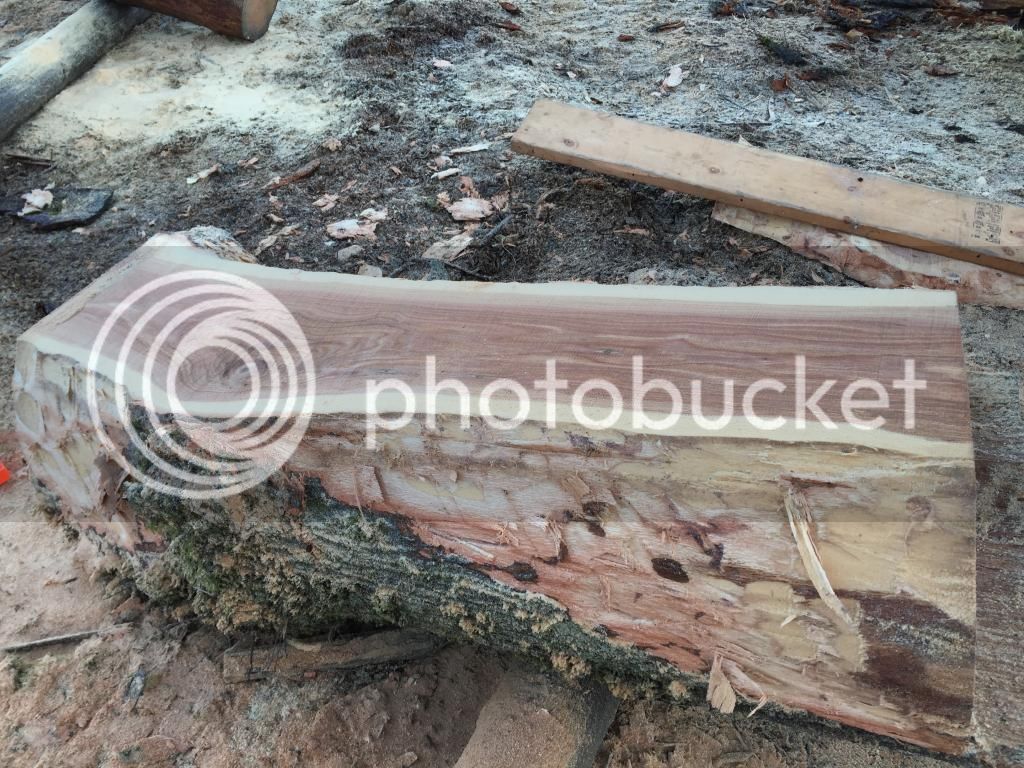
Just for fun my buddy who turns bowls cut the catalpa into chunks and found a couple nice crotch pieces. Unfortunately they started to crack within a couple hours.
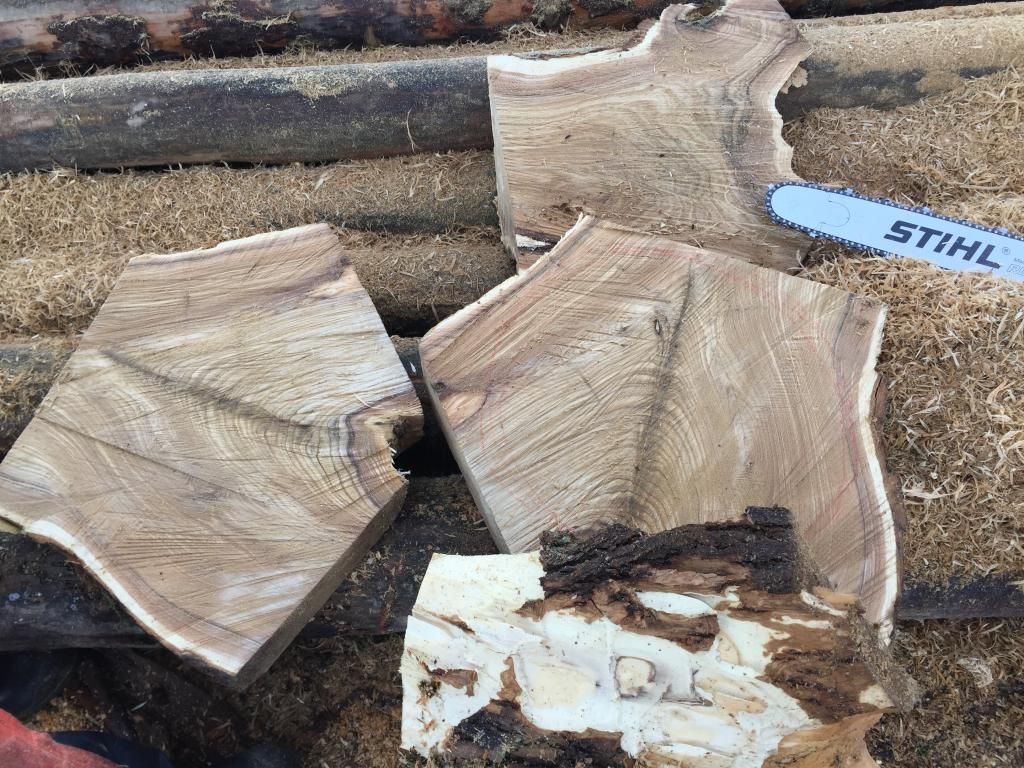
The more cuts we made into the oak, the better it looked. Just one knot near the left end, otherwise nice dark grain.
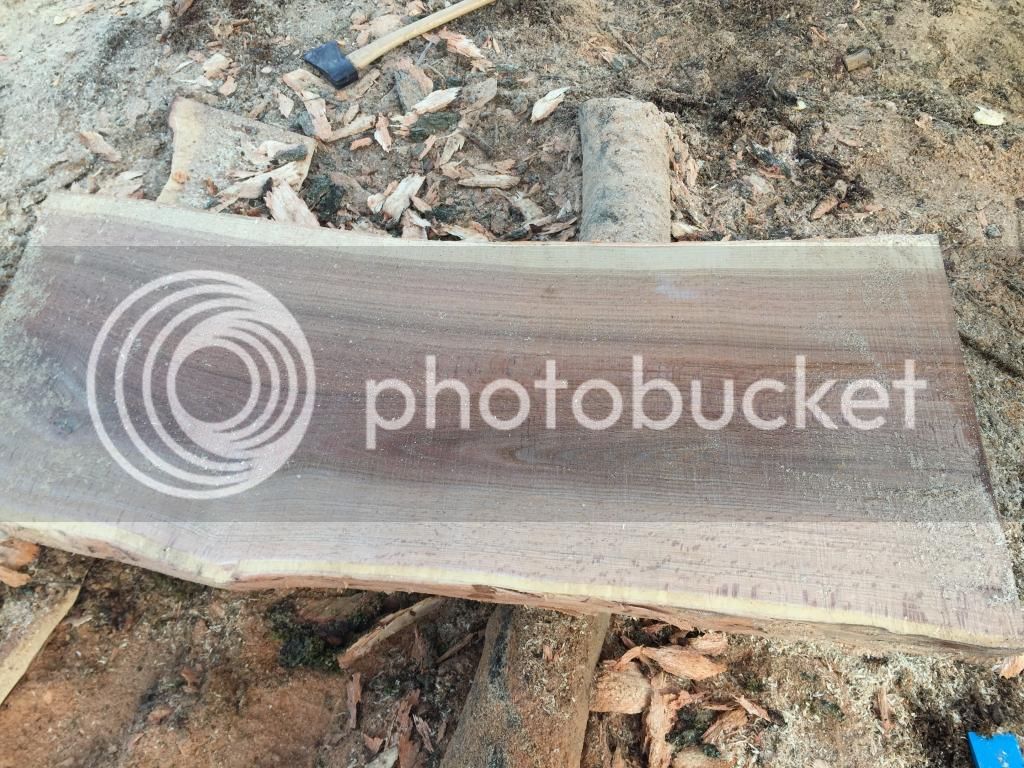
With two mills and four guys we soon had a nice stash of slabs building up.
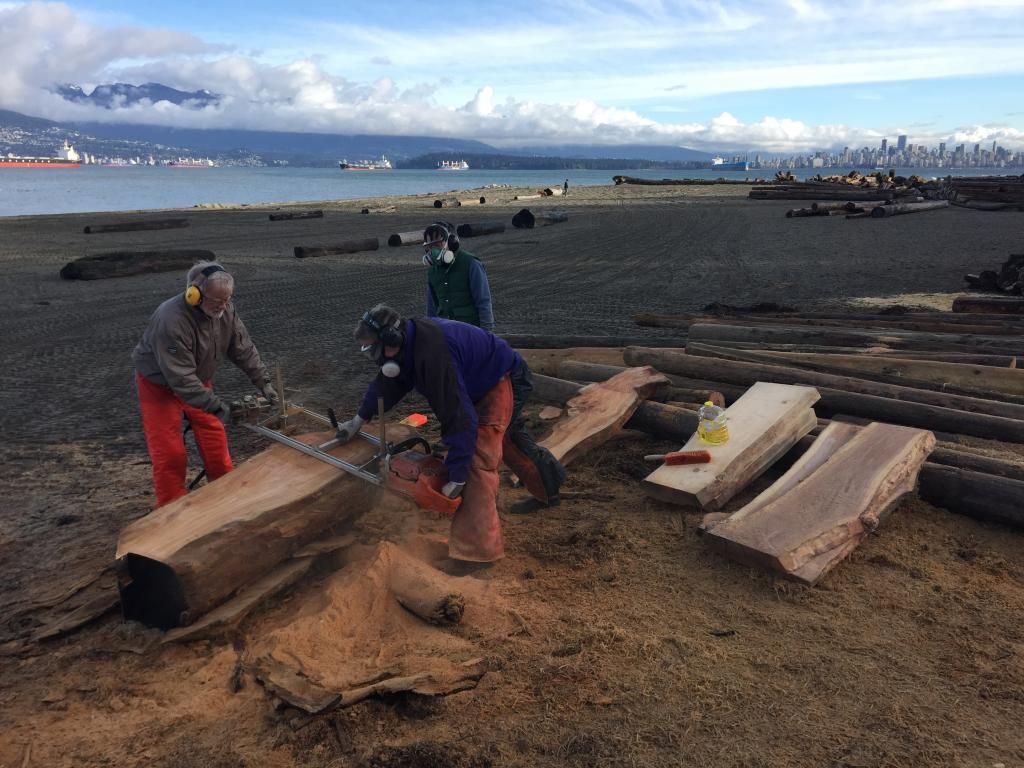
We wound up with four slabs of the cherry, five of elm, and four of the Port Orford. The oak was definitely the star, one of the nicest peices of oak I have ever milled. The cherry had some rot in it and we ripped the slabs lengthways to cut it out. The PO cedar had some nice sections, and smelled great as PO always does, but had a lot of knots in it.

Really liking the oak. The light colour along one edge is just due to the moisture evaporating more quickly I think.
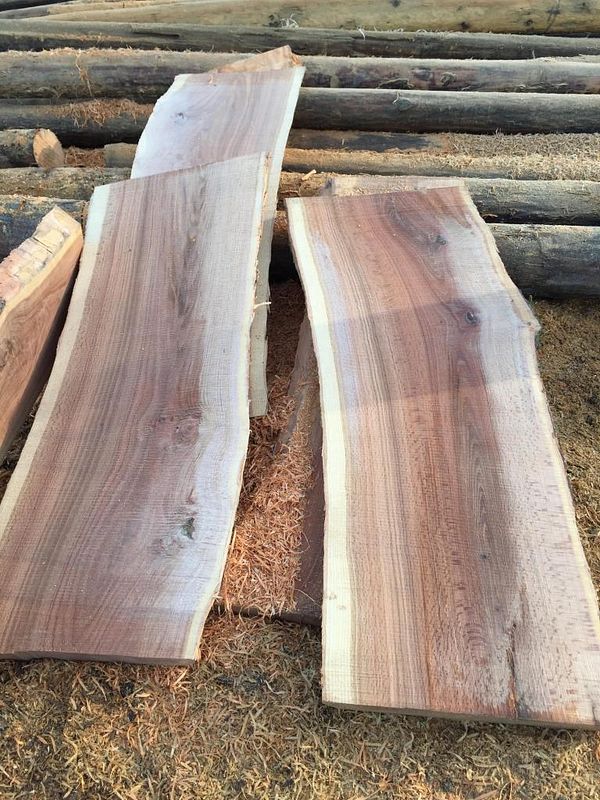
Here's a view of our little work camp towards the end. Another guy was there with his truck loading up firewood.
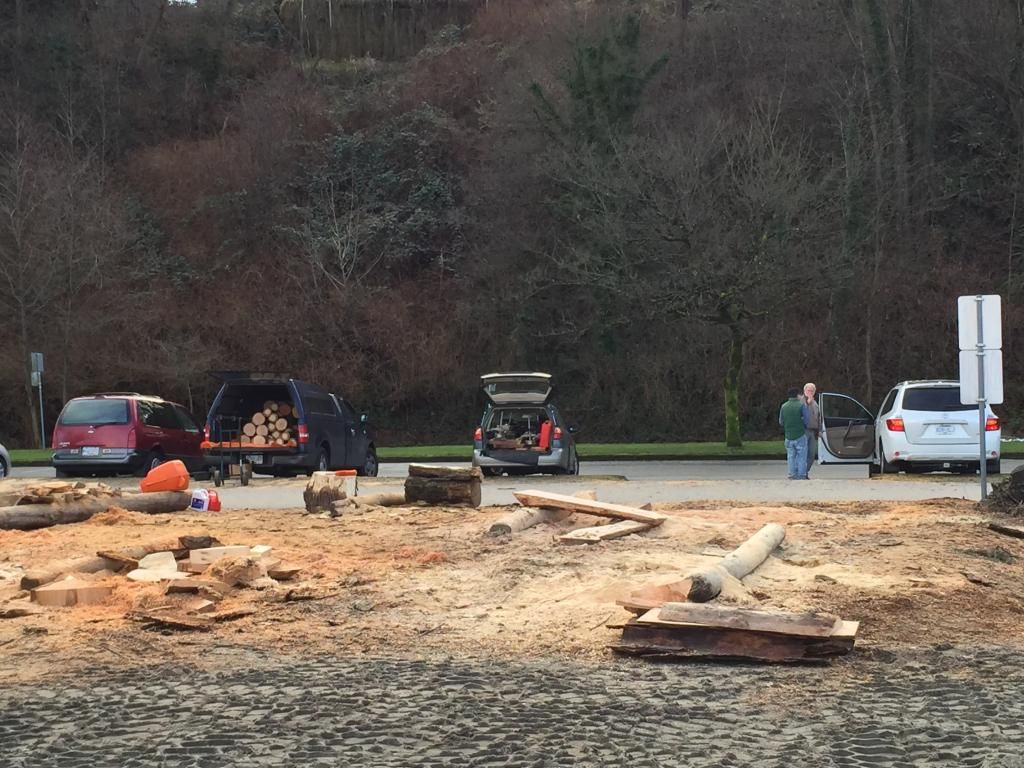
The weather remained totally cooperative the entire time. Perfect weather for chainsawing, maybe 10 degrees C. A view of downtown as we were wrapping it up.
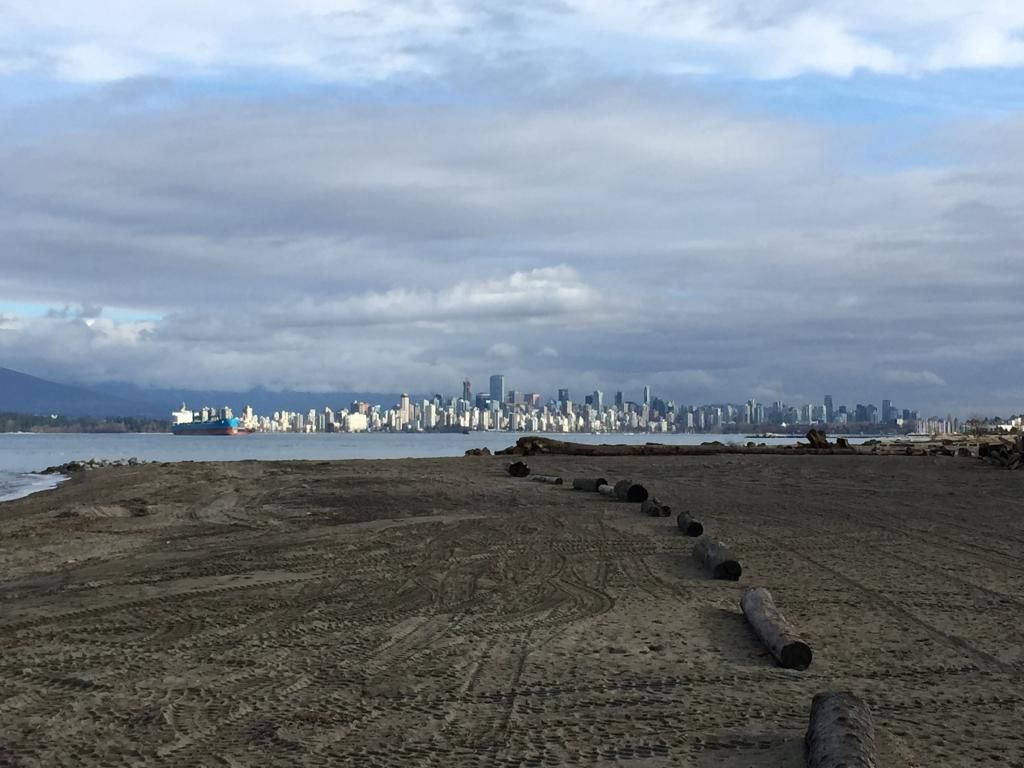
New chains from Granberg cut well, now that they have finally sent me the correct size. Had to sharpen each saw once. One of the saws started being fussy to start when it was warm. Need to do some maintenance on it. Otherwise we were done in about 4 hours, including lots of chatting, coffee drinking, and solving of many of the world's problems.
Weather is supposed to be miserable again tomorrow.
Weather has been bad all week, I was awoken at 4:30 this morning by the sound of rain hammering down on the roof. "No milling today" I figured and went back to sleep. By 7 AM it had stopped and turned into a fantastic day.
There were a few waves in the harbour when we arrived at the cutting area around 8:30, but after an hour or so the wind died down and it was just a really nice day.

I'd had my eye on several logs since before December. Turns out a bunch of oak showed up over the holidays, so we grabbed one of them, as well as a cherry and a Port Orford cedar.
Here is the very nice Parks Board guy with a loader setting the logs up in the cutting area for us!

I love the way the light in the morning shines on the freighters bobbing at their anchors.

Once the logs were set up, we peeled off the bark to avoid the sand that the logs accumulate while lying around on the beach. The mounted the guide board and took the first cut. This picture shows a crotch of catalpa in the front, then counter clockwise oak, Port Orford cedar, and cherry.

The first cut into the oak was looking pretty promising. Nice and dark brown. Don't know what kind of oak it is, maybe a white oak of some sort?

Just for fun my buddy who turns bowls cut the catalpa into chunks and found a couple nice crotch pieces. Unfortunately they started to crack within a couple hours.

The more cuts we made into the oak, the better it looked. Just one knot near the left end, otherwise nice dark grain.

With two mills and four guys we soon had a nice stash of slabs building up.

We wound up with four slabs of the cherry, five of elm, and four of the Port Orford. The oak was definitely the star, one of the nicest peices of oak I have ever milled. The cherry had some rot in it and we ripped the slabs lengthways to cut it out. The PO cedar had some nice sections, and smelled great as PO always does, but had a lot of knots in it.

Really liking the oak. The light colour along one edge is just due to the moisture evaporating more quickly I think.

Here's a view of our little work camp towards the end. Another guy was there with his truck loading up firewood.

The weather remained totally cooperative the entire time. Perfect weather for chainsawing, maybe 10 degrees C. A view of downtown as we were wrapping it up.

New chains from Granberg cut well, now that they have finally sent me the correct size. Had to sharpen each saw once. One of the saws started being fussy to start when it was warm. Need to do some maintenance on it. Otherwise we were done in about 4 hours, including lots of chatting, coffee drinking, and solving of many of the world's problems.
Weather is supposed to be miserable again tomorrow.





